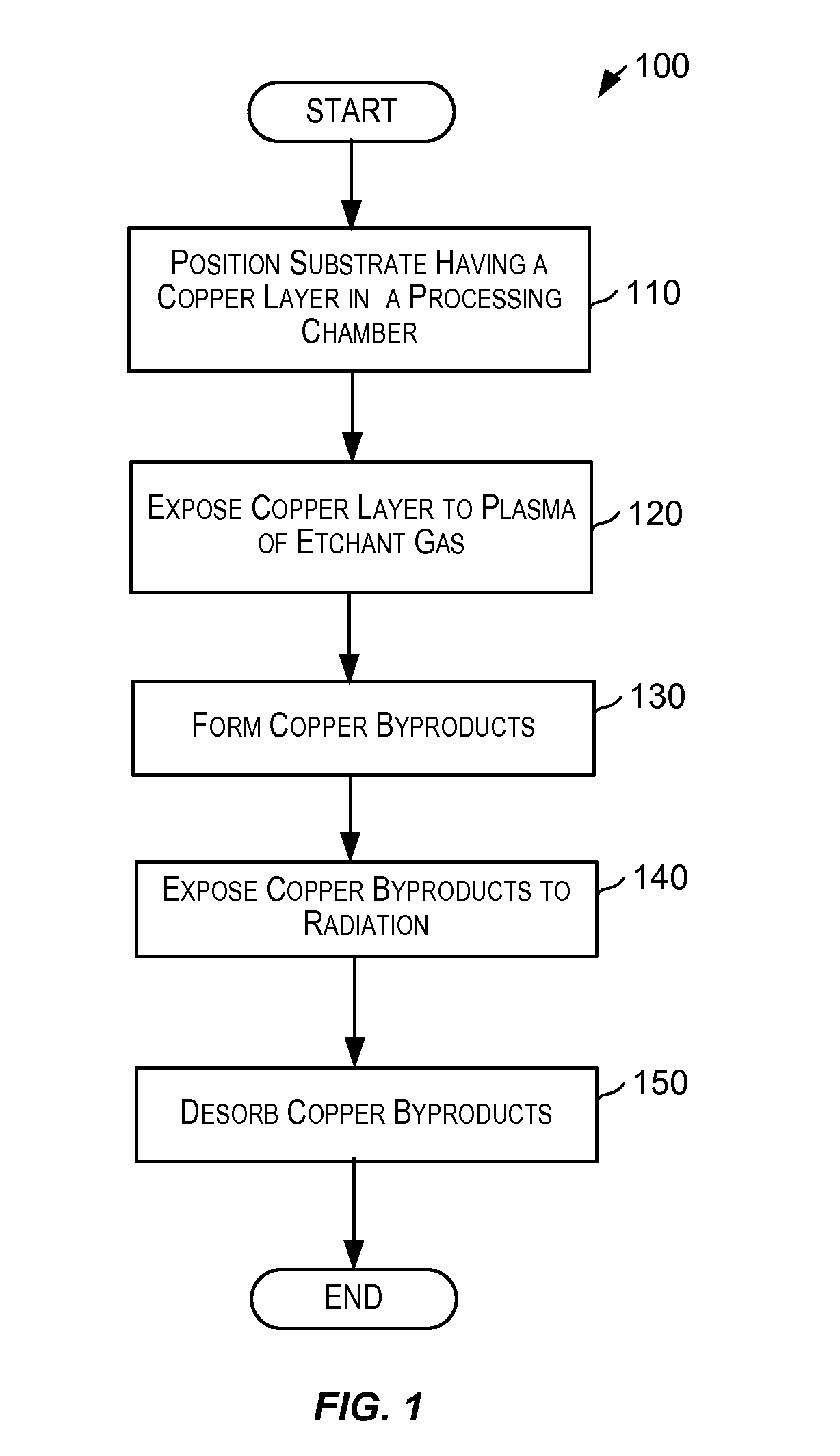Process for etching metal using a combination of plasma and solid state sources
a technology of plasma and solid state sources, applied in the direction of electrical equipment, electrical discharge tubes, conductive material removal by irradiation, etc., can solve the problems of difficult patterning of metals, deleterious effects on semiconductor devices as well as the chamber, and difficult removal of residues
- Summary
- Abstract
- Description
- Claims
- Application Information
AI Technical Summary
Benefits of technology
Problems solved by technology
Method used
Image
Examples
Embodiment Construction
[0012]Certain embodiments of the present invention relate to a method that is useful for the fabrication of semiconductor devices. While the present invention can be useful to produce a wide variety of semiconductor devices, some embodiments of the invention are particularly useful for producing semiconductor devices having metallic layers subtractively patterned with a plasma process, as described in more detail below. It is understood, however, that such a process may also be employed to subtractively pattern non-metallic layers and remove subsequent residues.
[0013]Methods of removing copper byproducts from the surface of a substrate and from the interior surfaces of an etch process chamber are described. A substrate having a copper layer is placed in the chamber. A plasma treatment transforms the copper into copper containing byproducts that deposit on the substrate and the interior surfaces of the chamber. UV energy is used to desorb the copper containing byproducts so they can ...
PUM
| Property | Measurement | Unit |
|---|---|---|
| Angle | aaaaa | aaaaa |
| Nanoscale particle size | aaaaa | aaaaa |
| Wavelength | aaaaa | aaaaa |
Abstract
Description
Claims
Application Information
 Login to View More
Login to View More - R&D
- Intellectual Property
- Life Sciences
- Materials
- Tech Scout
- Unparalleled Data Quality
- Higher Quality Content
- 60% Fewer Hallucinations
Browse by: Latest US Patents, China's latest patents, Technical Efficacy Thesaurus, Application Domain, Technology Topic, Popular Technical Reports.
© 2025 PatSnap. All rights reserved.Legal|Privacy policy|Modern Slavery Act Transparency Statement|Sitemap|About US| Contact US: help@patsnap.com



